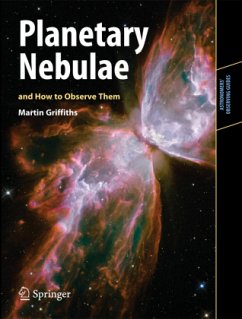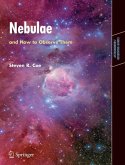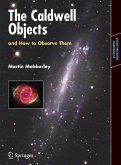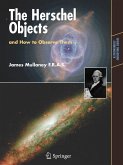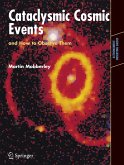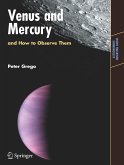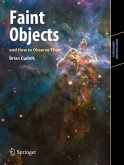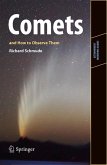Planetary Nebulae and How to Observe Them is for amateur astronomers who want to go beyond the Messier objects, concentrating on one of the most beautiful classes of astronomical objects in the sky.
Planetary nebulae are not visible to the naked eye, but they are a fascinating group of telescope objects. This guide enables a user equipped with an average-sized amateur telescope to get the best out of observing them. Topics covered include their astrophysical make-up, history of their discovery, classification and description, telescopes to use, filters, and observing techniques - in short everything anyone would need to know to successfully observe planetary nebulae.
The book describes the various forms these astronomical objects can take and explains why they are favorite targets for amateur observers. Descriptions of over 100 nebulae personally observed by the author using telescopes of various sizes are included in the book. Readers can create their own observing program or follow the list of these captivating objects, many of which are found within our own Milky Way Galaxy.
Planetary nebulae are not visible to the naked eye, but they are a fascinating group of telescope objects. This guide enables a user equipped with an average-sized amateur telescope to get the best out of observing them. Topics covered include their astrophysical make-up, history of their discovery, classification and description, telescopes to use, filters, and observing techniques - in short everything anyone would need to know to successfully observe planetary nebulae.
The book describes the various forms these astronomical objects can take and explains why they are favorite targets for amateur observers. Descriptions of over 100 nebulae personally observed by the author using telescopes of various sizes are included in the book. Readers can create their own observing program or follow the list of these captivating objects, many of which are found within our own Milky Way Galaxy.
From the reviews:
"This is a welcome addition to the literature ... . chapters discuss the history, discovery, and evolution of planetary nebulae. ... these are well written and give a comprehensive and up-to-date account of the current ideas on planetary-nebula formation. ... descriptions are largely accurate and the photographs have generally reproduced well. ... A useful and comprehensive list of further reading covering many aspects of planetary nebulae is included ... . this is a useful guide to observing these 'butterflies' of the night sky ... ." (Stewart Moore, The Observatory, Vol. 132 (1231), December, 2012)
"This book follows the standard pattern of the '... and how to Observe Them' series with a brief section on the discovery of planetary nebulae followed by a section on how they form. ... The book contains two chapters on observing techniques. ... The book ends with a bibliography that is fairly extensive ... . Planetary nebulae are some of the most popular objects that deep sky observers look for so ... this is a decent first guide to observing these fascinating objects." (Owen Brazell, Astronomy Now, August, 2012)
"This is a welcome addition to the literature ... . chapters discuss the history, discovery, and evolution of planetary nebulae. ... these are well written and give a comprehensive and up-to-date account of the current ideas on planetary-nebula formation. ... descriptions are largely accurate and the photographs have generally reproduced well. ... A useful and comprehensive list of further reading covering many aspects of planetary nebulae is included ... . this is a useful guide to observing these 'butterflies' of the night sky ... ." (Stewart Moore, The Observatory, Vol. 132 (1231), December, 2012)
"This book follows the standard pattern of the '... and how to Observe Them' series with a brief section on the discovery of planetary nebulae followed by a section on how they form. ... The book contains two chapters on observing techniques. ... The book ends with a bibliography that is fairly extensive ... . Planetary nebulae are some of the most popular objects that deep sky observers look for so ... this is a decent first guide to observing these fascinating objects." (Owen Brazell, Astronomy Now, August, 2012)

